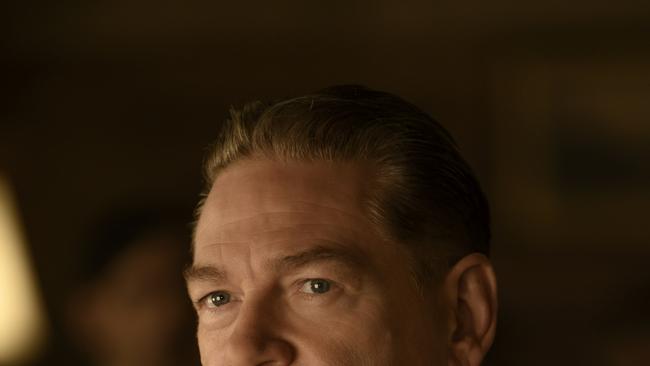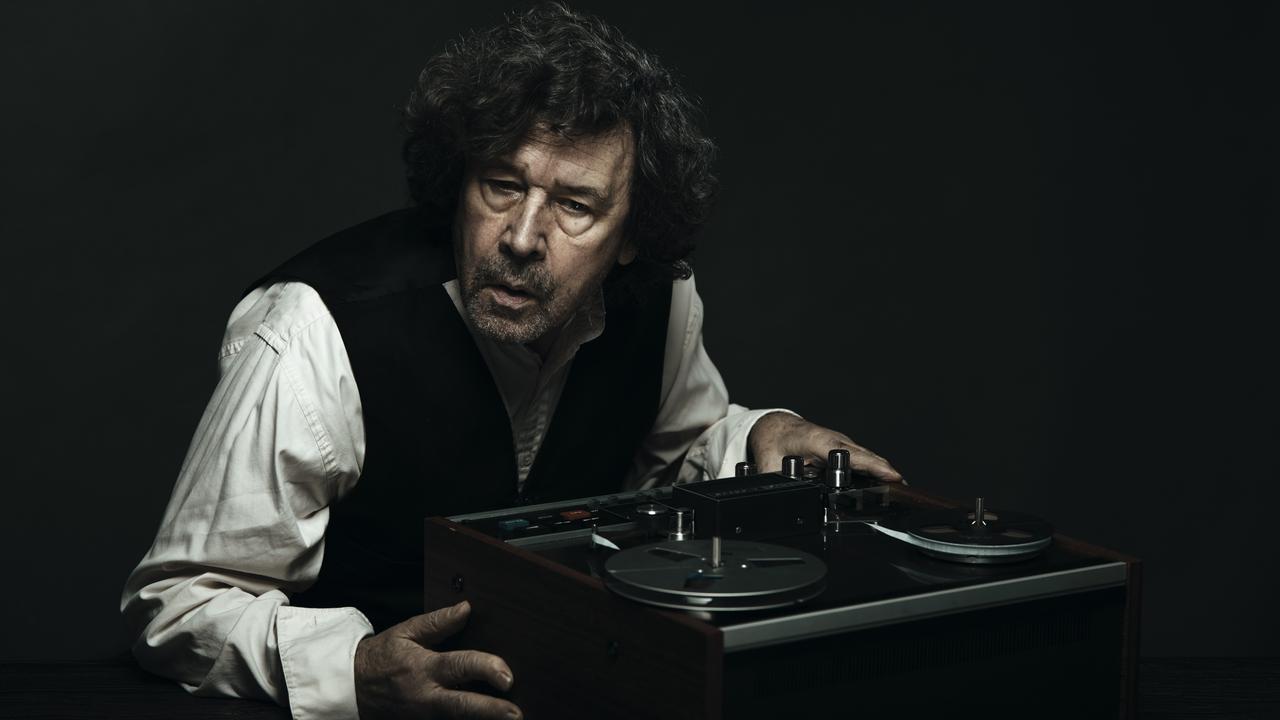Death on the Nile: Poirot goes in for the kill in Agatha Christie reboot
Kenneth Branagh’s Death on the Nile is a wonderful reminder that it’s OK for a movie to be sheer entertainment and nothing else. It’s not a masterpiece like Belfast, Branagh’s other film in cinemas now, but it is a boatload of fun.

Death on the Nile (M)
In cinemas
Three and a half stars
Kenneth Branagh’s Death on the Nile is a wonderful reminder that it’s OK for a movie to be sheer entertainment and nothing else. It’s not a masterpiece like Belfast, Branagh’s other film in cinemas now, but it is a boatload of fun.
Branagh is the director and star. It’s his second outing as Agatha Christie’s meticulous Belgian detective Hercule Poirot, following Murder on the Orient Express in 2017.
The scriptwriter, Michael Green, also returns and he and the director take M. Poirot to places Dame Agatha does not.
The movie opens not in Egypt in 1937, where the novel is set, but on the gas-misted battlefields of World War I.
A clean-shaven Poirot is in the trenches. There’s a scrape with the Germans and what ensues is the origin story of the sumptuous moustache we know him by.
We then move to the mid-1930s and, after a love triangle is established via a well-choreographed erotic dance sequence in a London nightclub, to the Nile and a luxury riverboat steamer, the SS Karnak.
The affaire de coeur involves Jacqueline de Bellefort (Emma Mackey) and Simon Doyle (Armie Hammer), who are engaged to be married until Jacqueline’s friend, the rich and beautiful Linnet Ridgeway (Gal Gadot), takes the dance floor.
Fast forward a chapter or so and Simon and Linnet are married and on honeymoon in the land of the pharaohs. Jacqueline, however, has followed them. They escape to the Karnak, with a gaggle of friends and associates that includes Poirot. Soon after, the uninvited Jacqueline boards ship.
It is all decadently glamorous. “We have the Karnak all to ourselves, a chef and enough champagne to fill the Nile!’’ says Linnet, and then pops a bottle and does just that.
Watching, I vowed to donate all my clothes to charity and track down whoever makes Poirot’s suits. And Gal Gadot, for this viewer, is the 21st century Grace Kelly: so beautiful, so talented and, when the role allows it, so humorous.
There is a murder, naturally, and a boat full of suspects who exercise Poirot’s little grey cells. Branagh takes him full OCD, including in a creepily funny moment involving a corpse that needs a quick bit of rearranging.
Readers of the novel will know who is shot in the head with a .22 calibre pistol but I will not reveal it here. As well as the lovers and spurned lover, there is Poirot’s purposeless pal Bouc (Tom Bateman), Bouc’s controlling mother Euphemia (Annette Bening), Linnet’s “slippery fish” lawyer cousin (Ali Fazal), a domestic servant (Rose Leslie) who covets Linnet’s Tiffany necklace, a sassy jazz singer named Salome (Sophie Okonedo), a socialite turned communist (Jennifer Saunders) and her companion (Dawn French). The comic duo are in good form.
“Someone is dead,” Poirot tells the guests aka suspects. “The crime is murder. The murderer is one of you. I have investigated many crimes but this has altered the shape of my soul.”
As this is a Christie whodunit there are smoking guns, red herrings and twists and turns. The one that still surprises me comes via another boat guest, the wonderfully named aristocratic doctor Linus Windlesham, who also had a romantic attachment to Linnet.
He’s a central character and I did not know who was in the role as this quiet, reserved perhaps constrained doctor. The excellent Oscar Issac?, I wondered. No. It is the English bad boy Russell Brand and he is a turn up for the books.
When the socialite communist asks, in haughty alarm, if Poirot is accusing her of murder, Bouc reassures her with, “He accuses everyone of murder.”
Poirot concurs. “It is a problem, I admit.”
Personally I hope the problem continues and Branagh takes Poirot on another case. If he does, I vote for an earlier and more interior one, the 1926 crime fiction classic The Murder of Roger Ackroyd.
Paolo Rossi: A Champion is a Dreamer Who Never Gives Up (PG)
In cinemas
I first started following football, or soccer as I called it, in 1982, my final year of high school. I played rugby myself but my Greek, Italian, Yugoslav and South American classmates were obsessed with the FIFA World Cup, held every four years, this time in Spain.
I joined in for two reasons: to pay overdue respect to my Italian heritage and, more mercenarily, because the Italians were rank outsiders and I had a wager on them.
Spoiler alert: the underdogs Italy became world champions for the third time (and the first time since the dictatorship of Mussolini), beating Germany 3-1 in the final, after earlier ousting the two most favoured teams, Argentina and Brazil.
I thanked them, particularly the centre forward Paolo Rossi, who topped the goal scoring count and was named player of the tournament.
I’d not heard of him until then. He was 26. So I didn’t know he had already been famous - and infamous - as is explained in the Italian documentary with a title that, like its star, goes the full distance: Paolo Rossi: A Champion is a Dreamer Who Never Gives Up.
This entertaining 90-minute subtitled movie, written and directed by Gianluca Fellini (no relation to the master) and Michela Scolari, is not a cradle to grave account of Rossi’s life.
He died in December 2020, aged 64, but the filmmakers spoke to him at length before that. He tells his own story, backed by interviews with other football stars he worshipped as a boy, or played with or against.
Most of them have one name: Zoff (Italy), Pele (Brazil), Maradona (Argentina), Platini (France). The great bearded doctor-footballer Socrates (Brazil) is in file footage but not interviewed. He died in 2011.
Rossi talks briefly and fondly of his childhood, playing football in the streets of Santa Lucia, Tuscany. “I was a scrawny, skinny kid, so no one thought I was anything special.”
Not quite. He was spotted by the glamour club Juventus and made his professional debut with that team from Turin. However, it was when he was demoted to second division, to Vicenza in the far north, that he started to live his childhood dream. He changed positions, moving from right wing to striker, and the rest would soon be history. He made headlines when Vicenza and Juventus, who co-owned him, tussled over where he would play next. Vicenza won. The price was then a world record.
It was when he was loaned to another club, Perugia, in 1980 that the infamous bit happened. He was implicated in a match-fixing and betting scandal and banned for two years.
He speaks about his “darkest hours” - he maintains his innocence - and how he was pulled through them by the father-figure Italian coach Enzo Bearzot, who wanted him in the national team no matter what.
“As long as we have Paolo Rossi,’’ he says in a file interview, “we can do anything.” In a gently humorous moment, Rossi says he owes Bearzot a great deal, then smiles and adds: “In a way, I managed to pay him back.”
In the lead-up to the cup, the Italian press disagreed with the coach and mocked Rossi’s comeback. For a while, the scribes were right. “I was out of practice,’’ Rossi admits.
Then, as he says, “all it took was 90 minutes to change opinions”. He’s speaking of the game where Italy notoriously roughed up Maradona and beat Argentina.
This movie is perhaps more for football fans — of whose number I have counted myself since that World Cup — than general viewers. Though there is a broader story about defying the odds, in sport and in life.
And the ending, in which the 80s stars talk about how football - now first and foremost a business - should be played, as “a game between friends”, should be watched by every young player, and their parents.



